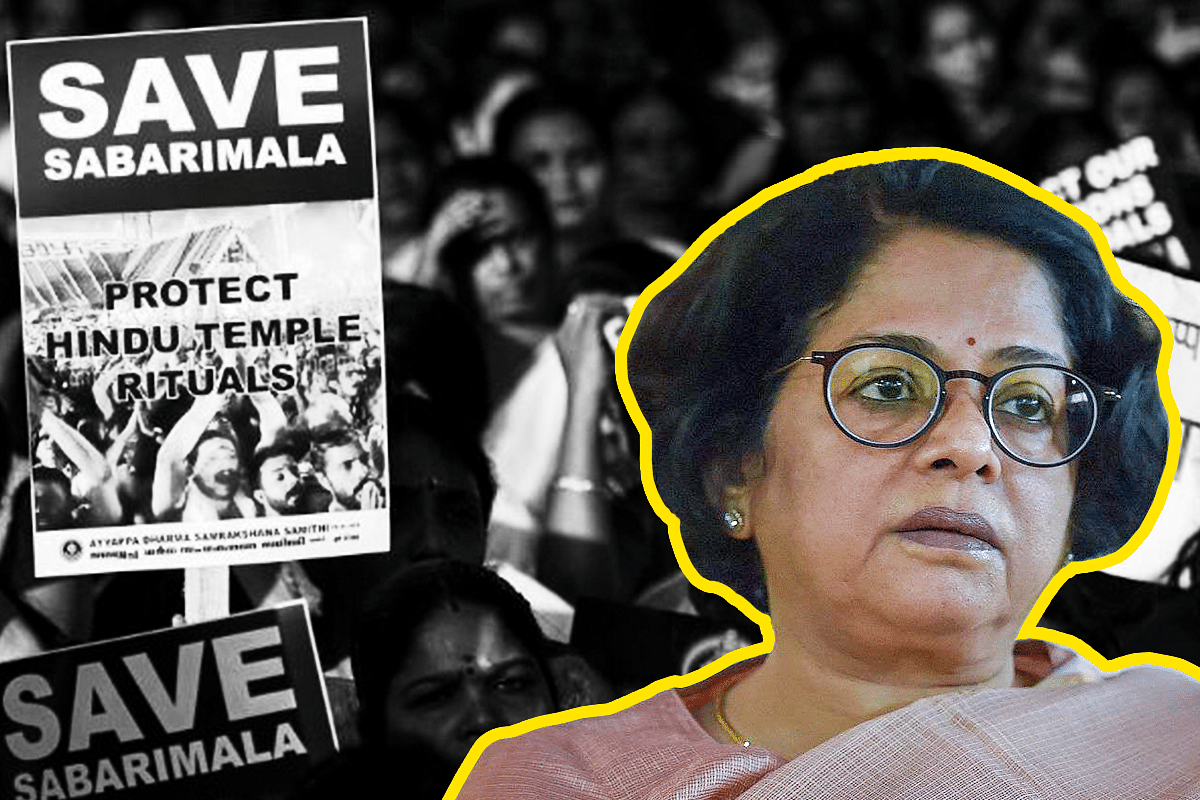Ideas
Justice Indu Malhotra, Dissenting Hero Of The Sabarimala Case, Retires Today
- In the Sabarimala case, while others pontificated about equality under the law, Justice Indu Malhotra stood like a true hero.

Justice Indu Malhotra
In 2018, a woman judge stood as the lone hero in the disaster that was the Sabrimala case. Justice Indu Malhotra retires today (12 March).
She was the lone woman judge in the bench that wrote the majority judgement — a 4:1 decision, that forced the Ayyappa temple at Sabarimala to open its doors to women in the 10-50 age group.
Justice Malhotra took a stand that would make her dissent and bat for religious freedom.
The majority verdict struck down Rule 3 (b) of the Kerala Hindu Places of Public Worship (Authorisation of Entry) Rules, 1965. It was the basis on which women of menstruating age were barred from entering the temple since the presiding deity was celibate.
Justice Malhotra noted that deep religious sentiment should not be interfered with by courts, unless there is truly an aggrieved party pleading attention to the same.
She emphasised the deity — Swami Ayyappa.
She empathised with the practices around Swami Ayyappa.
These were protected under Article 25 of the Constitution. In her dissent with the majority opinion, she held that Ayyappa devotees do form a separate denomination covered under Article 25 (1). She noted: “What constitutes essential religious practice is for the religious community to decide, not for the court”.
While others pontificated about equality under the law, Justice Indu Malhotra stood like a true hero.
On her last working day as a Supreme Court Judge, Justice Indu Malhotra has said :"I am happy and leave this Court with a sense of fulfilment."
She reportedly choked with emotion. She will be remembered for her empathy, sensitivity and conviction on a matter of deep religious devotion and sentiment.
Introducing ElectionsHQ + 50 Ground Reports Project
The 2024 elections might seem easy to guess, but there are some important questions that shouldn't be missed.
Do freebies still sway voters? Do people prioritise infrastructure when voting? How will Punjab vote?
The answers to these questions provide great insights into where we, as a country, are headed in the years to come.
Swarajya is starting a project with an aim to do 50 solid ground stories and a smart commentary service on WhatsApp, a one-of-a-kind. We'd love your support during this election season.
Click below to contribute.
Latest